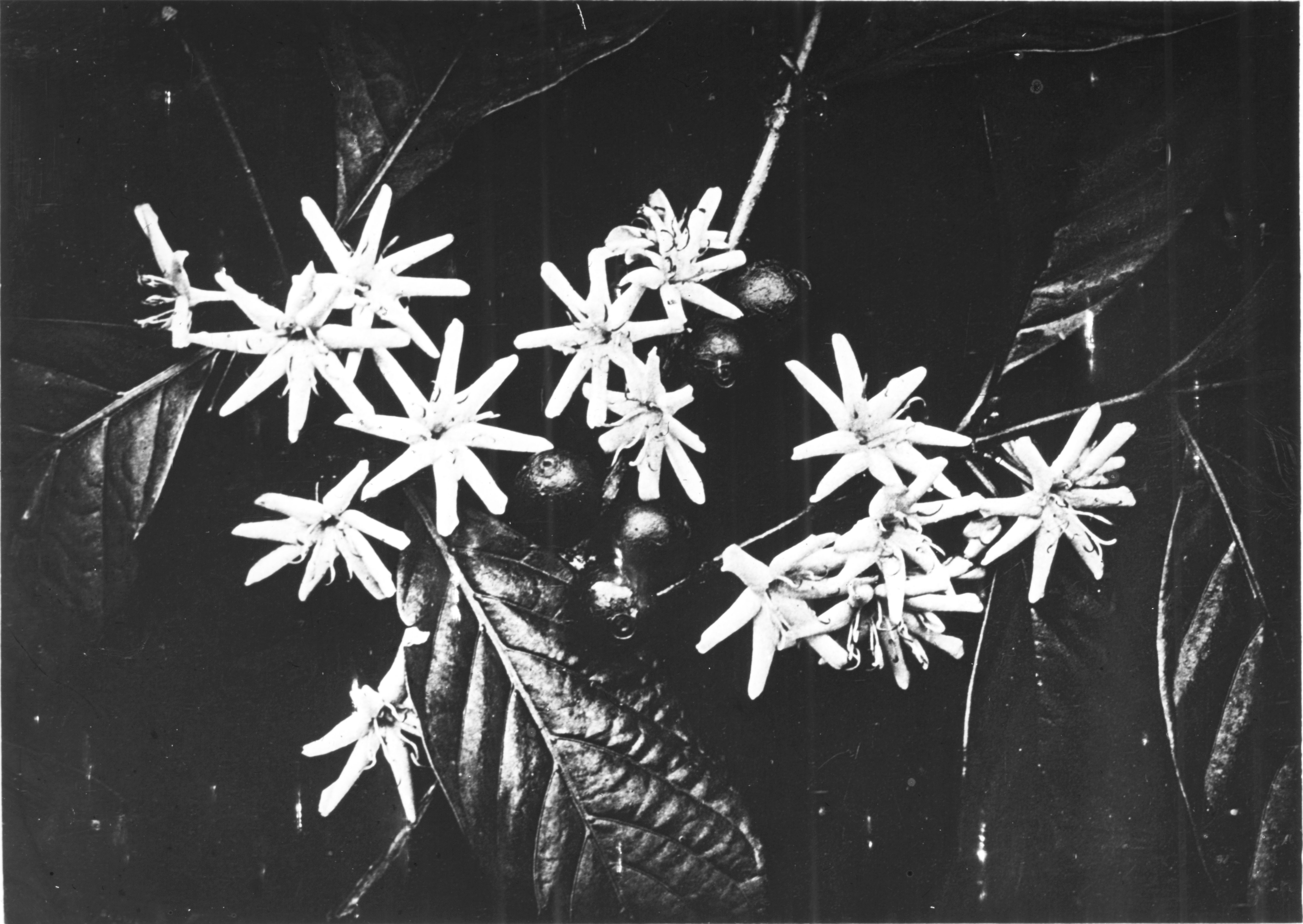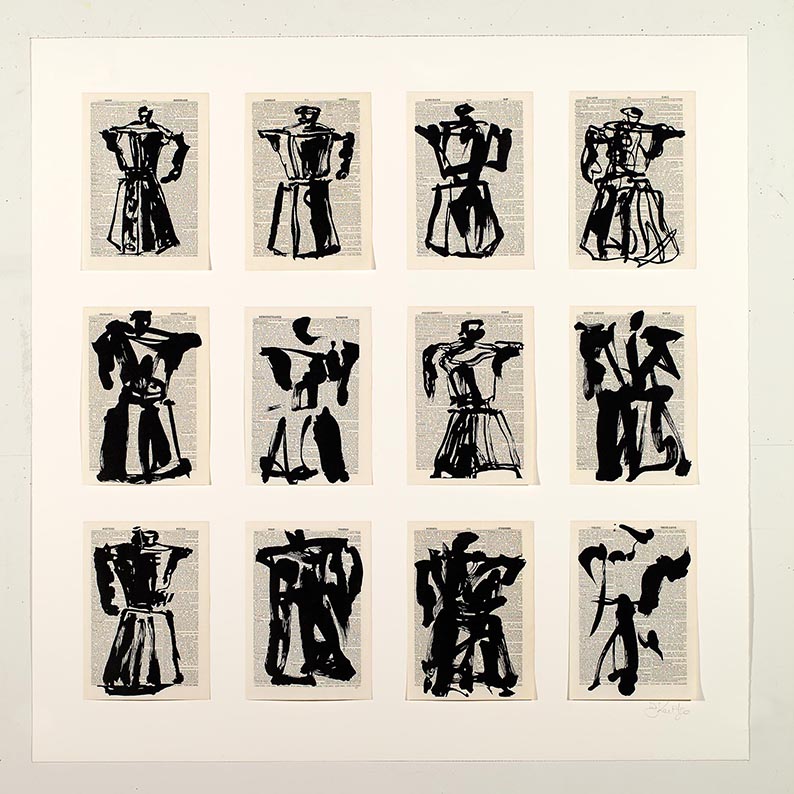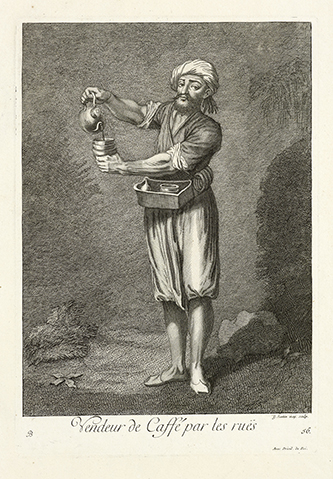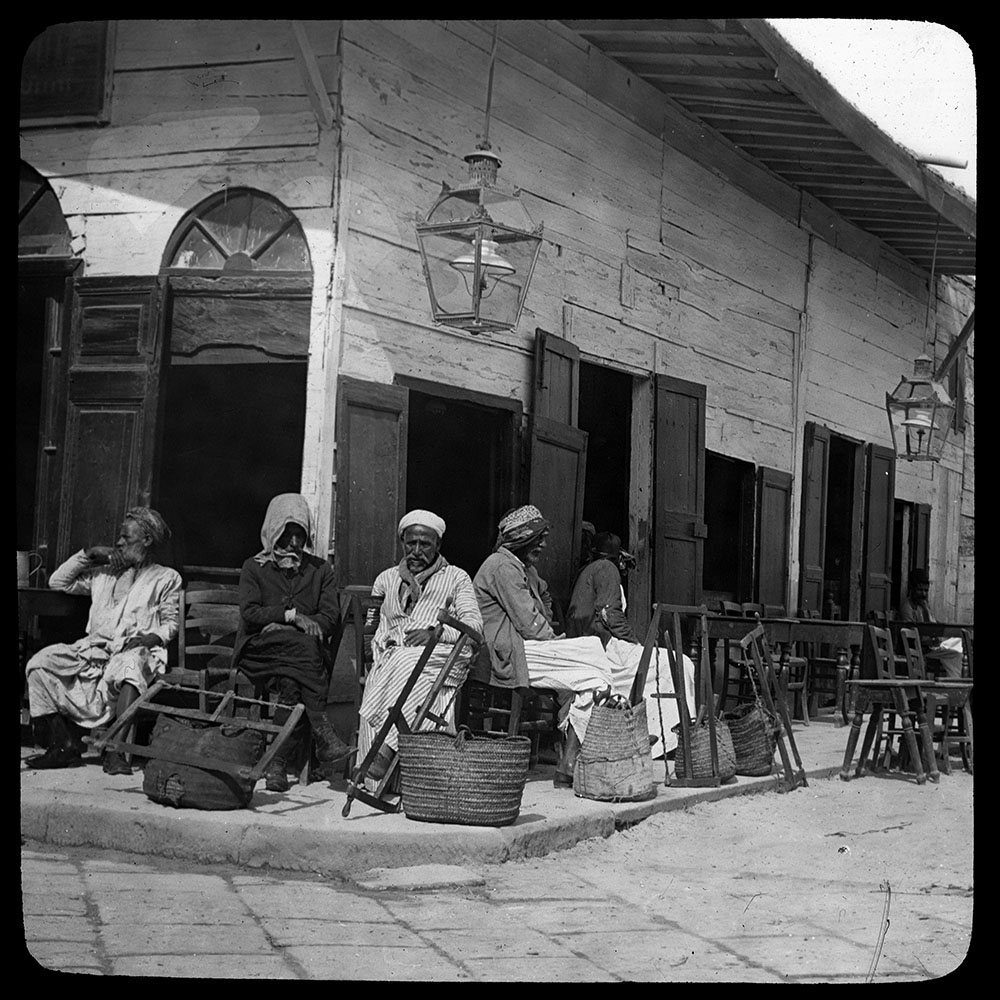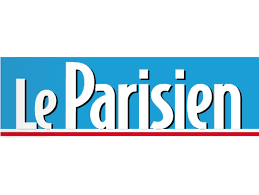Café In
Mucem, J4—
Niveau 2
|
From Wednesday 26 October 2016 to Monday 23 January 2017
“The café is France’s strongest institution”
Léon-Paul Fargue
The Mucem presents, from 26 October 2016 to 23 January 2017, the exhibition Café in.
More than three hundred works of art, photographs, objects, engravings, drawings, rare books, letters, audiovisual archives and unpublished texts, spread over more than 1000 m², will illustrate coffee’s history throughout the world.
The contemporary view of coffee is deeply rooted, and structured around human well-being, both individual and collective. The virtues of this drink, originally seen as medicinal, later pleasurable and convivial, have prevailed over all kinds of trials, particularly religious. Within a few centuries, coffee has clearly become an economic giant, and has moreover established itself as an anthropological ritual in the most etymological sense of the word.
Léon-Paul Fargue asserted that “the café is France’s strongest institution”, so why is its central commodity, coffee, often overlooked, its history forgotten, and its virtues so seldom celebrated? Therein lies the mystery that the exhibition Café in seeks to resolve, as well as the surprise to be discovered within said “institution”: a scientific, anthropological, aesthetic and economic material that few rubiaceae exhibit.
From the berry to the cup, it is the history, geography, economy, environment, consumption, advertising and the aesthetic of coffee that are blended and entangled into one vast realm. Ultimately the aim is to transform visitors / coffee consumers into enlightened witnesses to a history that is unexpected, yet which they come to recognise as familiar.
General curator of the exhibition: Jean-Michel Djian, writer and journalist
Assistant curator: Manon Desplechin
Scenographer: Jacques Sbriglio, architect
Scientific research for the exhibition was directed by: Mireille Jacotin, adjunct curator at the Mucem, assisted by Françoise d’Allemagne
Exhibition co-produced with the Malongo Foundation and in partnership with TechnicoFlor
Scientific committee: Ondine Bréaud-Holland, Alfred Conesa, Pierre Gagnaire, François Georgeon, Sylvette Larzul, Gérard-Georges Lemaire, Jean-Christophe Rufin, Michel Tuchscherer, and Patrick Viveret
Five sequences recreate the world of coffee:
|
1 |
A legend of humanity |
|
2 |
A history of cities |
|
3 |
A question of quality |
|
4 |
A market rationale |
|
5 |
A convivial affair |
The opening of the exhibition will be celebrated during a festive weekend the 28, 29 and 30 October with: a course de garçons de café (waiters’ race), the exhibition open house, the first “popular university of coffe”, films at the Mucem, a coffee-infused culinary creation by a Michelin-starred chef, a reading and a debate at La Friche la Belle de Mai.
For the duration of the exhibition, the public will be offered a programme “Café off” filled with cultural events at the Mucem and in the city: the “popular university of coffee” at the museum and in 12 places and different Marseille cafés, a large photography installation on the port quay and in partnering cafés, culinary creations “Café & gourmandises” in the shops of Marseille Centre and the restaurants of Tables 13, an exhibition at the Palais de la Bourse (CCIMP), a café chantant, and activities for children and families at the Mucem.
In conjunction with the exhibition Café in, a boxed set of five books co-edited with Actes Sud, will address the major aspects of coffee.
Interview with the general commissioner of the exhibition, Jean-Michel Djian
| Mucem (M) | An exhibition on coffee? The proposition is quite surprising! Why did you choose to address this subject at the Mucem? |
| Jean-Michel Dijan (J-MD) |
When we have an exhibition on a major artist, like Picasso for example, the public basically knows what to expect. For coffee, however, the situation is quite different: it is not art, but rather something patrimonial, medicinal, to be savoured. There has never been a major exhibition on coffee in France. So it will be a first: where does coffee come from? Why do we drink it? We aim to provide answers by calling on artists, writers, scientists, manufacturers… Our goal is to rouse visitors who come to see the exhibition expecting something banal (there is nothing more banal than coffee, right?). In reality they should come out amazed by the notion that, in fact, no one really knows what it is: this little seed planted in the 13th century in Ethiopia, the same place where humankind was born! In addition, doing this exhibition at the Mucem is appropriate, because Marseille is where the first “coffee house” in France opened in the 18th century opposite the La Bourse under a tent where a “pouring-man” served coffee in cups… Remember that Marseille was then a key coffee port where imports converged, well before Le Havre or Bordeaux took over. |
| M | What does this exhibition address? How is it organised? |
| J-MD | It unfolds in five sequences, with the idea that in order to understand coffee, one must start with the myths and common beliefs. This “legend of humanity” begins in Ethiopia and in “Arabia Felix”, where the first traces of coffee consumption were found. In the first sequence, we explain the Ethiopian “Zar” cult and reveal the divinatory virtues of this drink: by the way did you know that Victor Hugo made paintings with coffee grounds? We also depict the great figures of history who, from Bach to Bonaparte, were all “addicts”. Among them, a great many writers have nourished their work with caffeine: Balzac drank 50 cups a day. |
| M | The exhibition features numerous artists… |
| J-MD | Kentridge, Alechinsky, Arman, Daumier, Sempé… We wanted to demonstrate the wide variety of media that coffee inspires. Every domain of art is represented, photography in particular (Cartier-Bresson, Salgado, Brassaï, Reza…). We also called upon the great writers of today, commissioning texts about their passion for coffee: Bernardo Carvalho, Douglas Kennedy, Yves Simon, Zoé Valdès… To my delight, they all agreed, and we see in their writing that they are all absolutely crazy about coffee! |
| M | In the exhibition, these texts are placed facing twelve “city portraits”… |
| J-MD | Yes, it was the brainchild of scenographer Jacques Sbriglio as an introduction to this second sequence, which takes us from Aden to New York, by way of Marseille, Cairo, Paris, Venice, Cuba… Twelve cities that construct their identity around café culture will be “transported” to the Mucem through texts, photographs, paintings, engravings and objects. Coffee is unique in that it is the only drink to share a common identity with the establishment that serves it. This is the ambiguity of the word café in French: it is both a drink and an establishment. It is unparalleled. |
| M | There is also a focus on the scientific and economic aspects of the beverage… |
| J-MD | How do you make coffee? In the third sequence of the exhibition, we learn that to “give birth” to coffee, from the seed to the “bean” takes nine months, just like humans! The following sequence is organised around a giant world map designed as a video wall, explaining, with numbers and statistics, the economic stakes that coffee represents; employing 120 million people on the planet! We also illustrate the marketing powerhouse that accompanies the coffee industry. In this respect, a collection of posters from the Malongo Foundation provides a wealth of information on the way that coffee has been perceived over the last century. |
| M | The café is a social and convivial space. How is it presented in the exhibition? |
| J-MD | This was the most difficult and it is the subject of the final sequence, where we recreate a famous café from the 1930s, L’Ami Butte. It was important to capture all of the complexity of this social practice, which is much subtler than we think: in fact, while Sartre went to Café de Flore to be seen, Verlaine went to Café Procope to feel alone… The café is part of life. It is the very image of life. This is the central concept of the exhibition. |
Exhibition itinerary
Coffee… But, what else?
| 1 | Worldwide, more than 2 billion cups of coffee are consumed everyday. |
| 2 | The first coffee houses opened in 1430 in Mecca. |
| 3 | In the 18th century, English and German doctors were convinced by coffee’s miraculous ability to cure gout and poisoning. |
| 4 | There are 25 million coffee farms in the world. |
| 5 | Every continent produces coffee except Europe. |
| 6 | Second only to oil production in terms of trade, coffee represents a major economic interest for 70 countries. |
| 7 | A textile fibre has been created from coffee grounds. Its proprieties are amazing: odour resistant, UV protective and quick drying. |
| 8 | Australian engineers have found a way to transform coffee grounds into road construction material. |
| 9 | Vietnam has made the greatest breakthrough in the robusta coffee market. In 1990: 84 000 tonnes of coffee sold. In 2002: 850 000 tonnes sold. |
| 10 | 120 million people worldwide earn their living from coffee. |
| 11 | Coffee consumption worldwide has increased by 2.5 % per year since 2011. 1998-2000: 6.7 million tonnes (111 million bags). 2014: 9 million tonnes (150.2 millions bags). 2016: Today stabilising above 7 million tonnes. |
| 12 | In 1960: 600 000 bistros sold beverages in France. In 2015: Only 35 000 were still operating. |
A legend of humanity
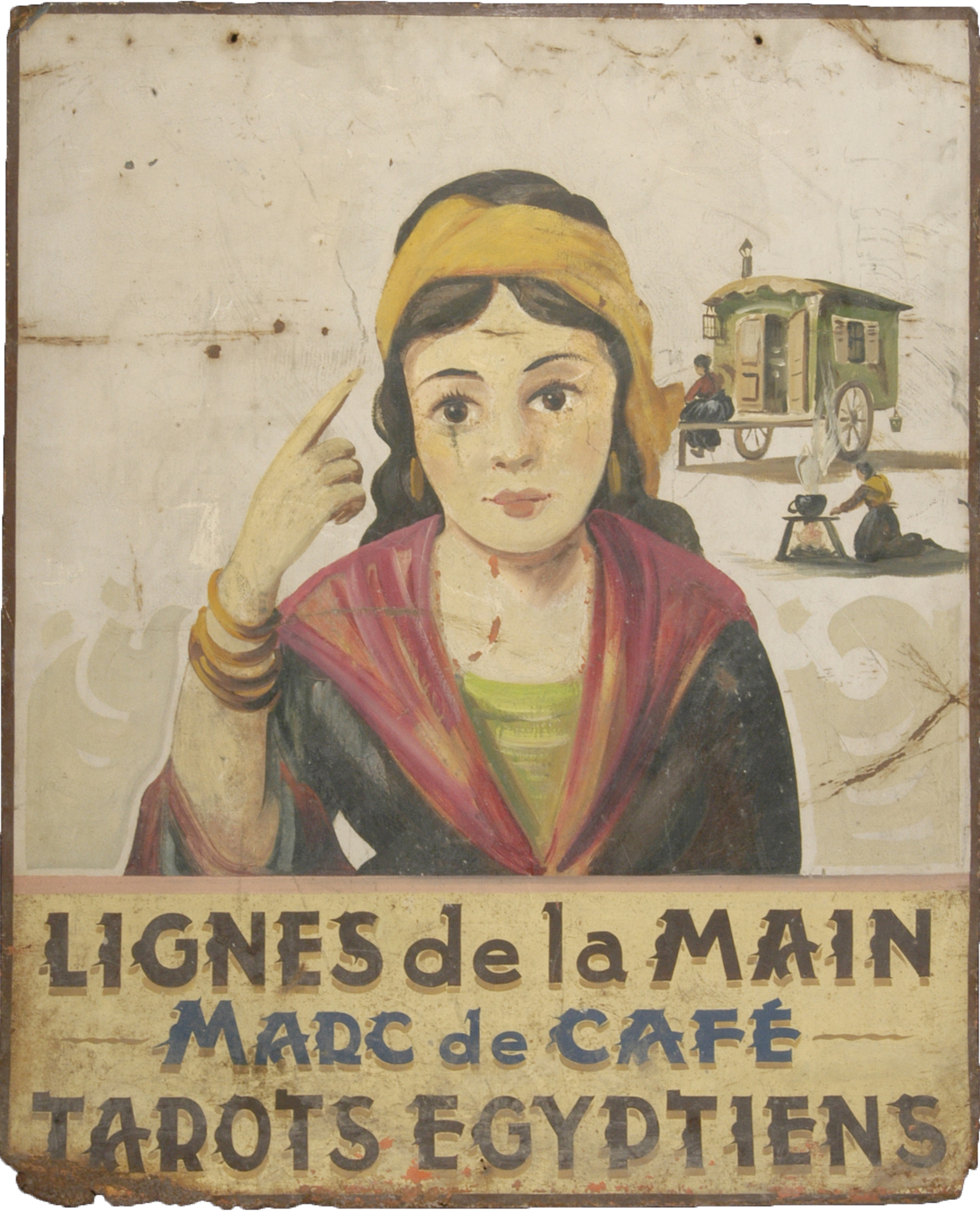
A legend rooted in the Horn of Africa introduces the first traces of coffee consumption in Ethiopia and in “Arabia Felix” by illustrating the Zar cult and revealing the divinatory and horticultural virtues of this drink. Although initially persecuted, it was later sublimated by the great men of history from Bach to Bonaparte.
“I am the king of coffee (…). Coffee for waiting, coffee for getting outside oneself. I prepare it like an alchemist. I use the spices that the palate fails to notice, but the body recognises.”
Laurent Gaudé, La Porte des Enfers (The Gates of Hell), Actes Sud, 2008
This sequence welcomes visitors with a black and white macro photograph of a coffee bush placed facing numerous historical references: texts, engravings, objects… Contemporary artists, like Isabelle Vicherat and her video installation Numen, are featured. For the occasion, in addition to the field documents of Marcel Griaule and Michel Leiris, the designer Emmanuelle Sainte Fare Garnot illustrates the Zar cult with eight panels. For this sequence, the Mucem also obtained the exceptional loan of Victor Hugo’s drawings and the Traité des Excitants Modernes by Balzac and illustrated by Pierre Alechinsky.
A history of cities
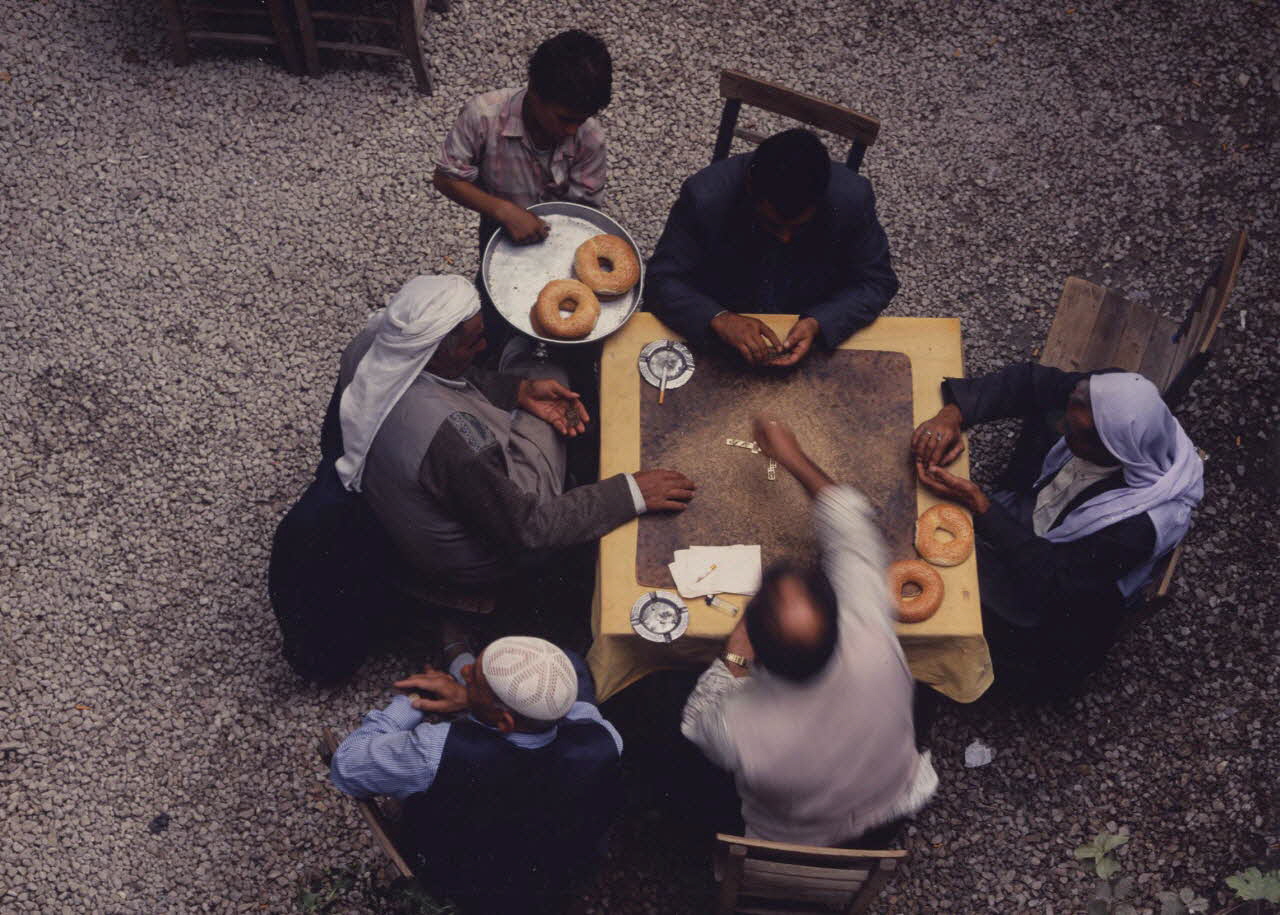
This circular sequence envelopes the exhibition by illustrating the anthropological view of the café. From Aden to New York, by way of Mecca, Cairo, Constantinople, Venice, Marseille, Vienna, Paris, London, and then back to Sao Paulo and Cuba, visitors will be swept along by the atmosphere of the café terraces, interiors, and signs, but also by the installation of objects nearby or embedded within the scene.
These twelve city portraits are constructed from texts, photographs, paintings, engravings and objects. They indicate, on the one hand, the worldwide diffusion of this beverage and, on the other hand, the vital relationship that each of these cities has maintained and continues to maintain with café culture. Each portrait is associated with a writer who, as a coffee lover, offers a literary work: Bernardo Carvalho, Douglas Kennedy, Claudio Magris, Yves Simon, Zoé Valdès, and Abdourahman Waberi. But equally present are photographers who have captured the moments of delectation: William Klein, Green Lionel, Ara Güler, Sarah Quill, Willy Ronis, Brassaï, Fernandino Scianna, Nick Price…
In this sequence visitors come to understand the epic history of coffee by exploring documents left by numerous great figures: like the work of Prospero Alpini, De plantis Aegypti liber, who brought back from Cairo the first account of the coffee plant, or the compendium of Jean de La Roque, Voyage de l’Arabie heureuse par l’Océan oriental et le détroit de la mer Rouge (…), which chronicles the arrival of coffee to France in Marseille.
Through the generous loans of historical documents from the holdings of the Alcazar library, the BNF, and the British Library, visitors will discover through coffee’s earliest uses, the customs and controversies that it has provoked from the 15th century to the present.
A question of quality
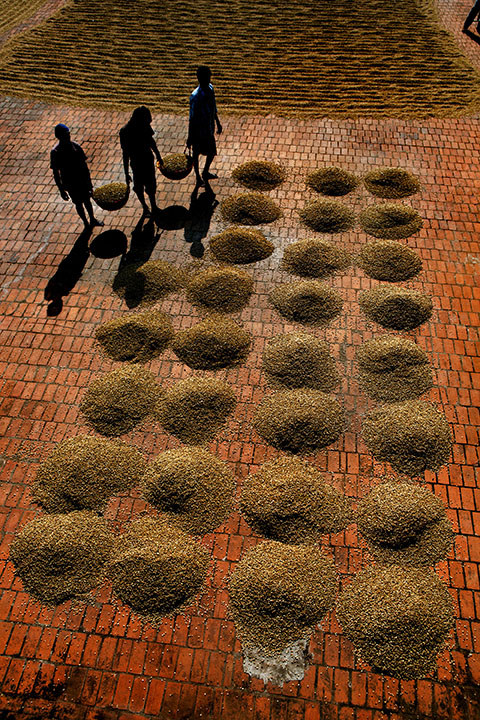
— Where do the multiples varieties of coffee come from?
— How are they processed, selected, harvested, and distributed?
— Who are the players in this globalised chain where the growers, agronomists, roasters, manufacturers and artisans coexist?
This sequence will take us on a journey, with a backdrop of photographs by artists Reza, Sebastiao Salgado and Erick Bonnier, into the world of botany, genetics, and agronomy, as well as the manual and industrial transformation of coffee through texts written by illustrious scientists like Antoine de Jussieu, botanist for Louis XIV, or André Charrier, emeritus researcher at INRA. Agricultural imagery, a monumental herbarium made from the leaves of robusta or arabica plants of various origins, and aromatic terminals designed for the exhibition by a perfumer reproduce the sensory universe of coffee from the flower to the roaster and percolator: nothing is omitted in this production chain that begins with the fruit of the coffee plant and ends in the cup.
Interviews with Michelin-starred chef Pierre Gagnaire and experienced baristas plunge us into the contemporary world of coffee where the virtues of the seed are sublimated.
A market rationale
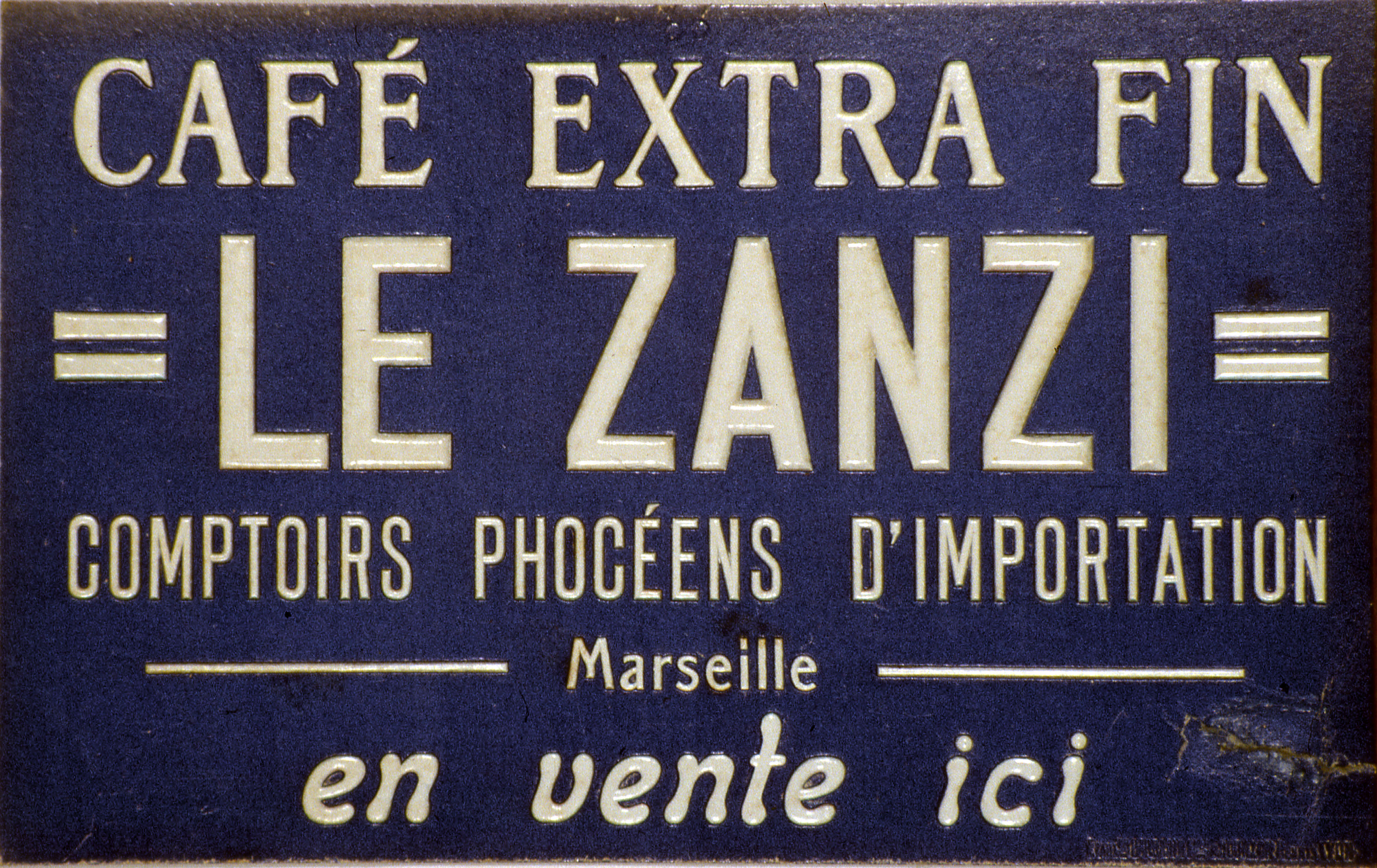
By way of a gigantic world map designed as a video wall of more than 180°, animated by Gobi Studio in Marseille, visitors come to understand the economic impact of coffee as the second largest production worldwide after petroleum.
Numbers and statistics simultaneously reveal the lesser-known side of coffee: the market concentration of roasting, the role of multinationals, the consequences of overproduction crises, the parallel development of robusta and arabica, the emergence of new more equitable modes of production and consumption.
Through coffee related objects manipulated by top designers such as Aldo Rossi for La Conica, or artists like Jean Nouvel and Louise Bourgeois, and posters and commercials, the most popular of which made the brands famous, the inventiveness of the advertising market will be illustrated.
Pieces from contemporary artists who have taken advantage of this economic boom, such as Bazile and Bustamante, provide a different note.
The fourth sequence situates coffee production within the globalised economy. Its scenography, within the space of the ellipse, completely immerses visitors with screens presenting, in real time, the changes in coffee prices in London and New York. Accompanying this installation, showcases present the products derived from this raw material and used today by leading designers, be it clothing or perfumes, as well as a screen illustrating the advertising market, which for nearly a century, has accompanied coffee.
A convivial affair
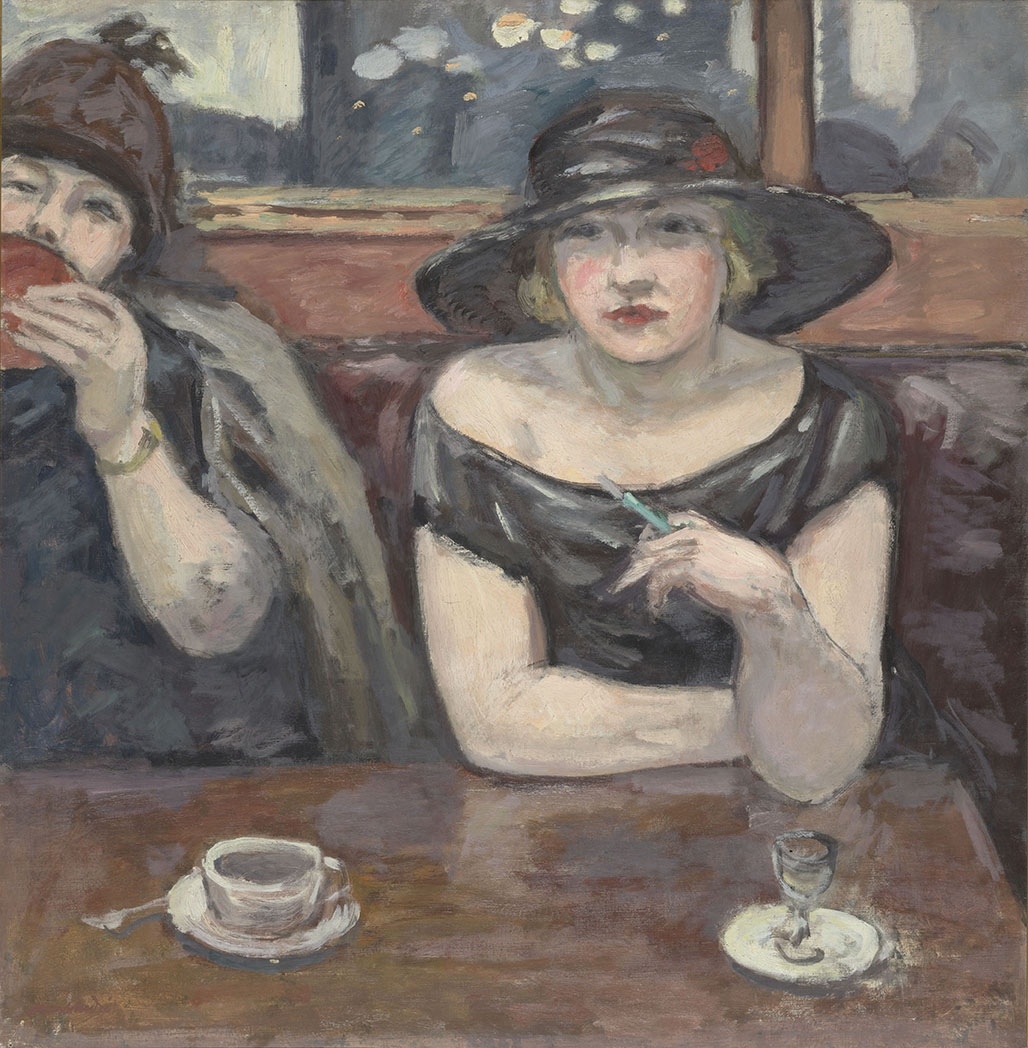
This final sequence closes the exhibition by focusing on the consumption of coffee as a social practice that led to the invention of an architectural typology, the café, in constant evolution over time. Fragments of furnishings from the famous café L’Ami Butte in Paris (1910-1930), now classified as heritage objects conserved by the Mucem, will be reconstructed here for the first time.
Finally, because the café is a source of inspiration, a symbol of “living together”, this sequence reproduces around the associated themes (meeting, playing, loving, withdrawing, orating, conversing, etc.) masterpieces and objects that characterise this romanticised reality.
The café is a source of inspiration for numerous artists. Thus pieces will be presented by Raoul Dufy, who amused himself with scenes of games, by Albert André who painted the emancipation of women, by Sophie Calle who speaks of amorous encounters over a coffee, and by Richard Baquié. For this occasion Daumier, Sempé and Geluck have been reunited with three series of drawings sketching scenes that may have taken place in this theatre of society. But the café is also the birthplace of political ideas, demonstrated by photographs of conferences and political meetings of major parties. Lastly, the exhibition pays tribute to the figure of the café waiter, the “garçon de café”.
Jean-Michel Djian, exhibition curator
Jean-Michel Djian is a journalist and producer at France Culture. Former editor in chief at Monde de l’Éducation, he is also the founder of France Culture Papiers. Author of some dozen documentaries and as many essays on culture and politics, this doctor of political science served for twenty-five years as director of the master’s degree programme, Coopération artistique international, at Université Paris 8. Author of a book published by JC Lattès on the Timbuktu manuscripts, he curated an exhibition on the subject for the International Organisation of La Francophonie. Fascinated by Ethiopia where he studied Rimbaud, coffee merchant in Harar, he naturally discovered the origin of the coffee plant there.
Scenography by Jacques Sbriglio
Jacques Sbriglio is an architect and urban planner. He directs the Sbriglio agency, architects established in the heart of the Aix-Marseille metropolis. Among its different sectors of activity, like urban planning and architecture, this agency has numerous clients in France and abroad in the field of exhibition design. These include: Arteplage de Neuchâtel in Switzerland (2002), as well as a series of exhibitions on the work of Le Corbusier, whether in Austria (1998), Taiwan (2002), India (2007), Brazil (2009) and most recently in Marseille (2013) as part of the Capital of Culture year.
Jacques Sbriglio recently created the scenography for the exhibition “Picasso and Popular Arts and Traditions” at the Mucem (from 27 April to 29 August 2016). A professor in architectural schools, he is the author of numerous books, articles, and lectures on modern and contemporary architecture.
www.sbriglio-architecte.fr
“This scenography is intended to organise a historical, scientific and amusing itinerary focused on coffee, which has become over time, and as defined by the commissioners of this exhibition, a legend of humanity.
The aim is thus to provide a suitable atmosphere to recreate the world of coffee from its production to its consumption, and an itinerary demonstrating the historical, political, social, cultural and economic stakes related to this beverage. Three longitudinal walls run the length of the gallery evoking the rows of the coffee fields. Ceiling lighting playing on the nuances of the colour green, is a reminder that coffee belongs to the vegetal realm. Likewise the beautiful red colour of its fruit, “the cherry”, is found in the designs that serve as a passport for this exhibition entitled: Café in.
As a counterpoint to the length of this composition, revealing the scale of this large gallery, and traversing all three walls, an ellipse symbolises the coffee bean, as it is classically perceived in the collective imagination. From the plant to the seed, from the seed to the cup, from the cup to the café… this scenography ultimately seeks to pay homage to coffee as a mythic beverage, as well as to the chain of actors who bring this production to life. It is thus normal that it ends with humour on the last link in this chain with the figure of the waiter, the “garçon de café”, opening the spaces of this exhibition beyond the walls of the Mucem… into the city centre.”
Jacques Sbriglio, architect scenographer
Partners and sponsors
With the sponsorship of TechnicoFlor
In partnership with Air France, La Provence, France Bleu Provence, Le Parisien, BFMTV
